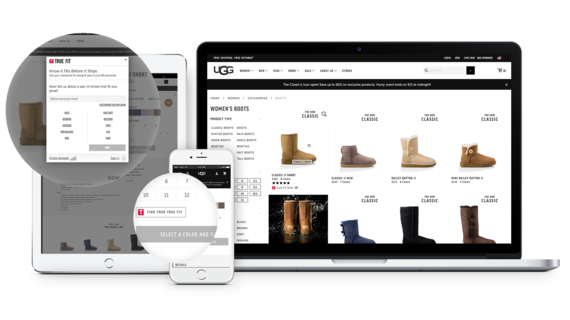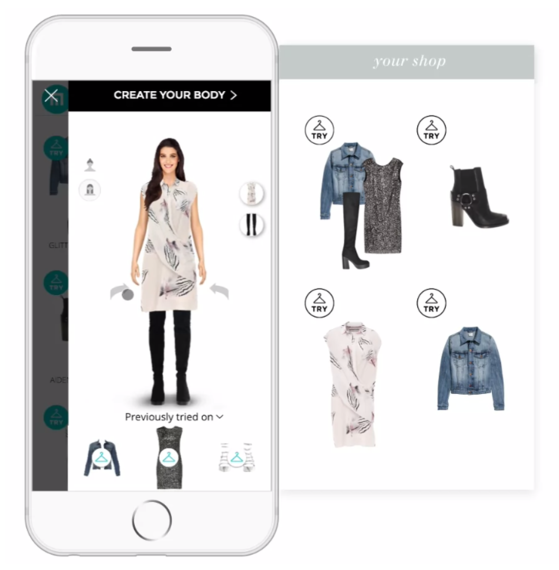The full effect of millennial spending habits is only now starting to take hold. And if you're in luxury ecommerce, the following two stats should haunt your dreams.
According to a study by Harris Poll and Eventbright, a full 78% of millennials now "choose to spend money on a desirable experience or event over buying something desirable." What's more, 72% say they would "like to increase their spending on experiences rather than physical things in the next year."
Simply put, millennials of all shapes and sizes are wary of "stuff." And if "stuff" is what you sell -- especially expensive stuff -- that's not good news.
So what's the answer?
Easy. Give 'em what they want. Of course, this doesn't mean abandoning luxury products in favor of becoming an event coordinator or Uber driver.
What it means is reorienting your approach to luxury ecommerce around three experience-driven fronts: (1) three-dimensional technology, (2) virtual fittings, and (3) AI-powered stylists. In fact, those three ingredients are precisely what a new report from Shopify Plus identified as the leading drivers of luxury ecommerce's emerging future.
1. 3D Technologies
Three-dimensional technologies are on the rise. Unfortunately, most luxury ecommerce sites haven't kept up. Two applications in particular present major advantages for brands looking to create powerful product experiences.
The first is 3D imaging (also known as body-scanning). The technology isn't exactly new, but only recently has it become ubiquitous among consumers with the spread of high-resolution smartphone cameras. By allowing visitors to upload 2D images of themselves, online retailers can create 3D renderings that essentially let customers play dress up with their own interactive avatars.
If that sounds like too much heavy technical lifting, it's not. Consider a platform like Metail's MeModel that relies on a single facial picture in conjunction with key body measurements to create a 3D model with up to 96% accuracy. Such models profoundly impact the physicality (i.e., the experience) of online shopping.
The second is 3D printing. As Shopify Plus explains, "While high-end luxury brands might scoff at 3D printing of high-end prototypes out of fear that a lesser version could erode the value of the actual offering, 3D printing might still be used in ways that make a virtual experience more tangible and convert at higher rates."
How?
Not by allowing prospects to print their own 3D prototypes and wearables at home as in the case of jewelry; after all, that technology isn't exactly commonplace even among luxury shoppers. Instead, the more immediate route involves enlisting the help or following the lead of 3D printing shops like Polychemy that let visitors design, print, and ship their own custom designs all within a single web app.
Whichever approach to 3D technology fits your products best, both create multi-touch and even multi-sensory experiences prior to a purchase.
2. Virtual Fittings
Virtual fittings function similar to 3D imaging; however, rather than rely on interactive avatars they're built on a two-step process of sizing and augmented reality (AR).
The first step applies to both high and low-end merchants alike. Returns are the bane of any experience-heavy online product, especially fashion and jewelry. Virtual size guides go beyond the usual product-page dropdowns, and instead lead users through a process of brand comparisons, body typing, and aggregated customer feedback. One such virtual fitter -- True Fit's Confidence Engine -- helped UGG not only reduce "fit-related return," but also double their onsite conversions.
Step two of the process then invites users to create AG-fueled pictures of what their soon-to-be-purchased product will look like on them. Unlike the 3D rendering mentioned above, these 2D previews can be uploaded and updated immediately.
Just like virtual sizing, AG has already been implemented by industry leaders. At Fashion Week this September, designer Rebecca Minkoff live-streamed her entire show through virtual-reality headsets and simultaneously unveiled her new Fall line via Zeekit, a mobile app that gives users the ability to input their own full-body images and digitally "try on" her latest collection.
As an added piece of luxury, virtual fittings can be combined with social media to generate shared experiences that drive home your products desirability even more.
3. AI-Powered Stylists
Personal stylistics are nothing new to luxury brands. What is new is combining the personal touch of a stylist with the algorithmic capacity of artificial intelligence.
Most enterprise organizations are awash in data, and notorious for underutilizing the wealth of information at their fingertips. AI-powered stylists change that by creating personalized recommendations based on each customer's purchase history, browsing habits, off-site behavior, and even the activity within their social-media circles.
Subscription-based fashion leaders like Stitch Fix -- valued at over $250M -- and Trendy Butler have already begun integrating AI heavily into their business model. The result is a savvy mix of art: real, human stylists, and science: the power of user-generated algorithms.
For luxury brands, however, simply creating better recommendations isn't enough for experience-hungry millennials. Instead, the Shopify Plus report asks you to imagine offering "exclusive invitation-only virtual pop-up showrooms to specific segments based on purchase history, browsing behavior, and current collection of luxury goods that allow consumers to virtually see new designs, try them on in virtual fitting rooms, and interact in realtime with designers to co-create product the segment is more likely to purchase."
This holistic picture of AI and experience is precisely where the future of luxury ecommerce is headed. Notice the combination of exclusivity ("invitation only"), personalization ("segments based on purchase history, browsing behavior, and current collection of luxury goods"), as well as sensory experience ("see ... try on ... and interact in real time.") While these measures may be out of reach for low-margin merchants, they apply perfectly to luxury consumers hungry for a more robust buying experience.
If They Want Experiences ... Give Them Experiences
The revelation that millennials overwhelmingly prefer experiences over products is far from good news to the luxury ecommerce industry. And yes, millennials are certainly more averse to purchasing of "stuff" -- especially expensive stuff -- than previous generations.
But that doesn't mean the future itself is bleak.
The answer to millennial buying habits isn't to ignore them and hope for the best. Rather, it's to reinvigorate your approach to luxury ecommerce by giving millennials the experiences they crave through (1) three-dimensional technology, (2) virtual fittings, and (3) AI-powered stylists.
Instead of fighting the trend of experiences over products, bring the two together.



